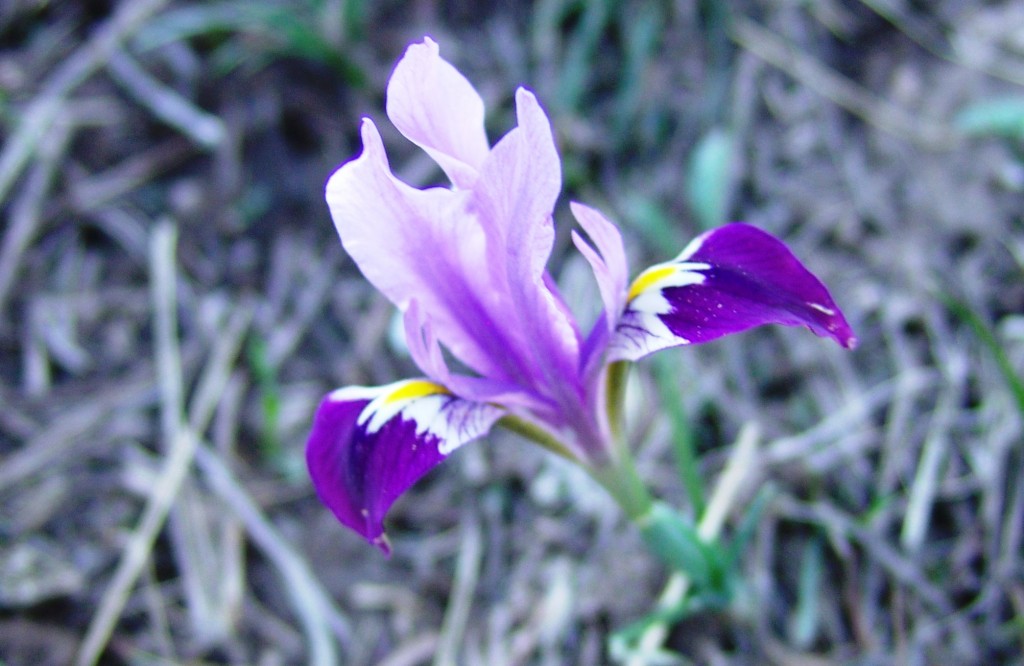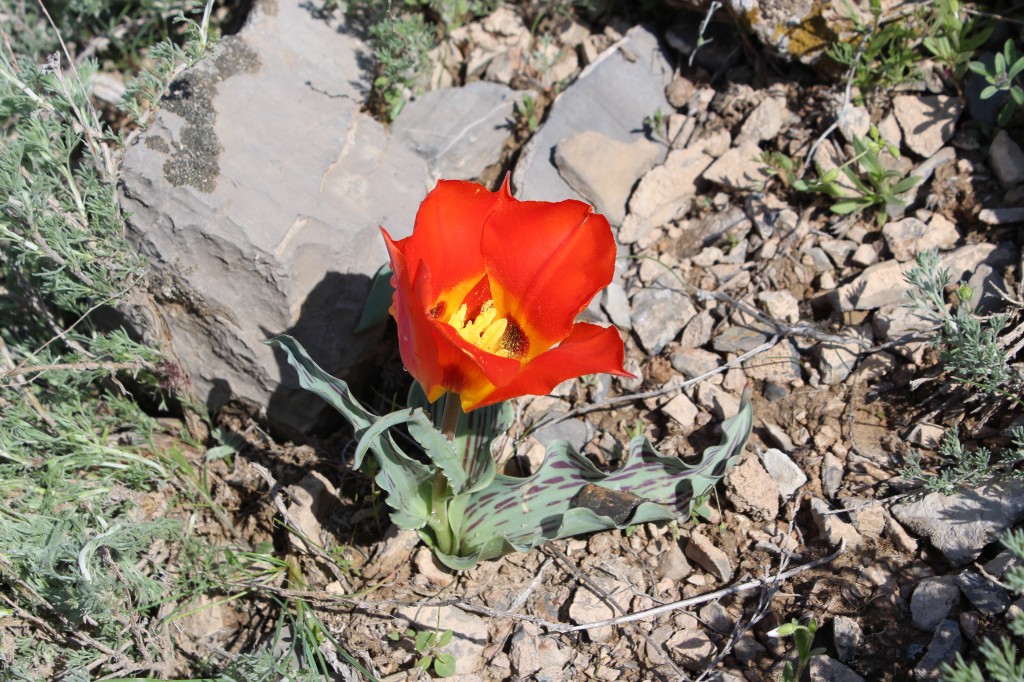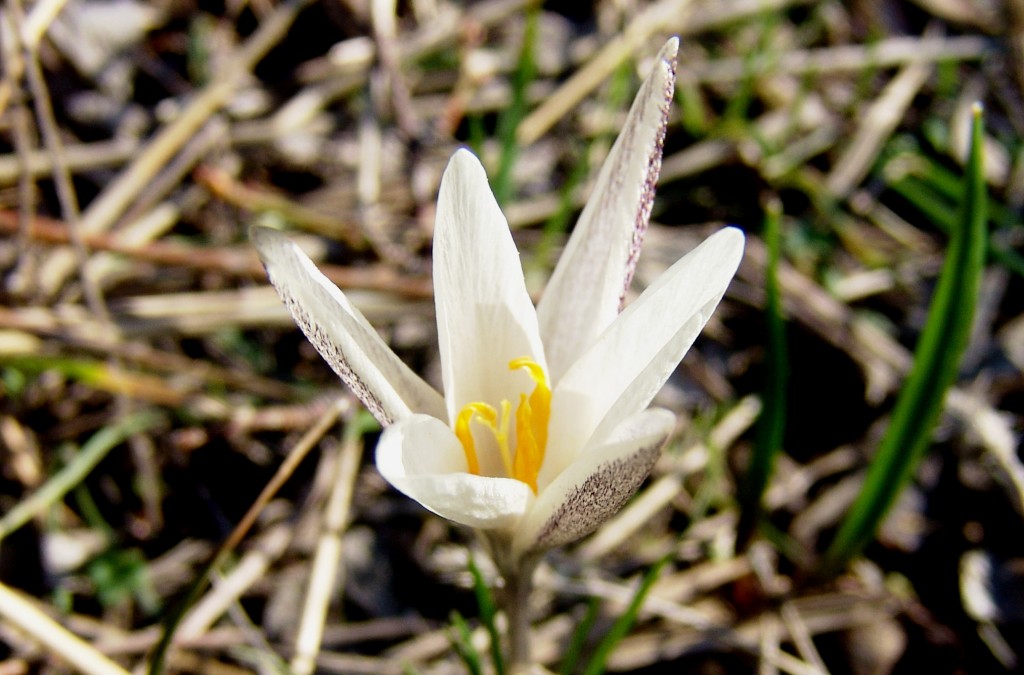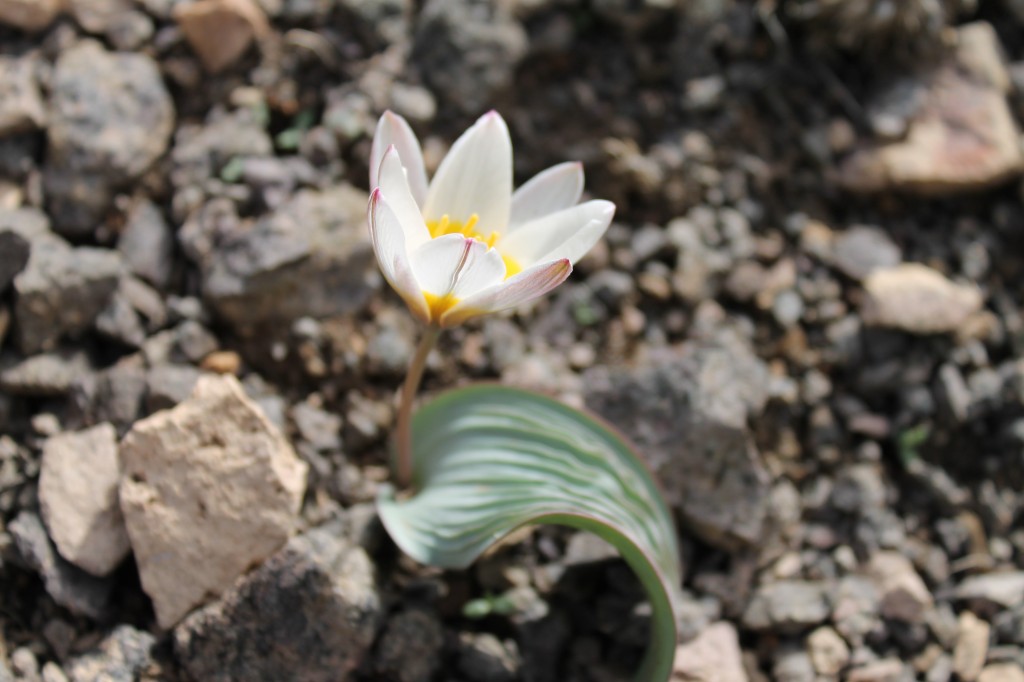ASTANA – The hardy souls who stick out one of Astana’s long and frigid winters can count on at least one reward: when the snows finally melt in April and May, the steppe bursts brightly, if briefly, into bloom around them in the few weeks between extreme cold and extreme heat that constitute spring in this part of the world.
“Annual plants bloom first in the steppe in spring, painting the landscape like a colourful carpet,” Mikhail Danilov, lead researcher at Almaty’s Phyto-Introduction and Botanics Institute, told The Astana Times on April 7. “The plants live during the few warm and humid days of early spring. They are able to bloom and seed during these few days.”
The steppe spring is short and intense for a reason: “The biological strategy of the majority of steppe plants is simple: a plant has to finish blossoming as early as possible, during that short period when the soil is already out of winter frost, but is still soaked enough with snowmelt waters,” Andrey Mikhailov writes in his article “Steppe in Bloom” on the Unique Kazakhstan website. “It has to do it so that afterwards it could lie dormant in the form of a tiny seed, or a bulb, up to the next year.” It is this strategy that makes the steppe spring so intense, he writes, “when suddenly and in no time every single thing here revives, germinates, and literally explodes in billions of delicate and gentle flowers.”
 After the annuals start things off, perennials like tulips, gagea (a group of spring flowers of the lilly family), blueflags, crocuses, hazel grouse and wind flowers start to open as well – but all disappear by summer, Danilov says, preferring to spend most of their time resting as bulbs or other forms of rootstock.
After the annuals start things off, perennials like tulips, gagea (a group of spring flowers of the lilly family), blueflags, crocuses, hazel grouse and wind flowers start to open as well – but all disappear by summer, Danilov says, preferring to spend most of their time resting as bulbs or other forms of rootstock.
Because Kazakhstan is so huge and varies so much geographically and climatically, the blooming seasons are different across the country, and springtime creeps only slowly northward from southern cities toward the capital. “You can see the flowering of crocus alatavicus [white crocuses] around Almaty city in February,” Danilov said. “The first flowers bloom in northern Kazakhstan not earlier than in the end of March or in the beginning of April.”
There will be blossoms overhead as well as underfoot, he notes: in addition to the wild apples the country is known for, there are the progenitors of our cultivated pear, plum and apricot trees, plus pistachio, raspberry, blackberry and currant flowers.
Almost all the plants you’ll see on the steppe are native to Kazakhstan, Danilov said, and the dominant colours of the steppe in spring are the reds and yellows of wild tulips and poppies. Delicate red wild corn poppies abound in the country’s south, Mikhailov writes. There are also swathes of violet, white and light and dark blue, depending on the time of year and the location, Danilov said. Poppies and tulips provide yellow and red, blueflags, speedwells, violets and gentians bring shades of blue and purple and crocuses provide the white. It is sometimes said in Kazakhstan that red poppies grow where there have been battles, while blue flowers grow in places of mourning.
Among the spring steppe flowers, the most famous are probably the country’s wild tulips – native to this region. There are dozens of tulip varieties in Kazakhstan, Mikhailov notes – some with the classic tulip bowl shape, others looking more like small stars, like the tulipa turkestanica, which shares the name of the southern Kazakh city of Turkestan.
 The flowers and their short lives recur in Central Asian art and have been loaded with symbolism over the centuries. “[The] tulip was the symbol of the ephemerality of earthly existence in the mythology of the nomads of Central Asia,” writes Oleg Belyalov in “Flowers of the Paradise Gardens,” on the Unique Kazakhstan website. “The blooming coincided with the main spring holiday, Nauryz, the beginning of a new year. Watching the eternal cycle of life – lush spring blossom and [the] rapid fading of beautiful flowers, nomads believed that only in the gardens of Paradise would they bloom forever. When nomads laid their leaders to rest, they decorated their clothes with gold plates depicting tulips.”
The flowers and their short lives recur in Central Asian art and have been loaded with symbolism over the centuries. “[The] tulip was the symbol of the ephemerality of earthly existence in the mythology of the nomads of Central Asia,” writes Oleg Belyalov in “Flowers of the Paradise Gardens,” on the Unique Kazakhstan website. “The blooming coincided with the main spring holiday, Nauryz, the beginning of a new year. Watching the eternal cycle of life – lush spring blossom and [the] rapid fading of beautiful flowers, nomads believed that only in the gardens of Paradise would they bloom forever. When nomads laid their leaders to rest, they decorated their clothes with gold plates depicting tulips.”
No flowers on this earthly steppe can contend with both the pitiless cold and the pitiless sun – but over this month and then next, between punishing seasons, Kazakhstan’s patient native poseys will be blooming their hearts out.




